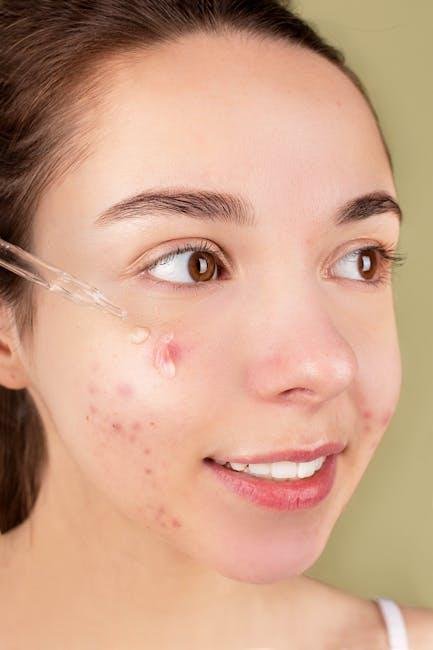caring for Dogs with Skin Infections: A Guide to Healing and Comfort
As any devoted pet owner knows, our canine companions express their health and happiness through their skin. A vibrant coat and smooth skin can be indicators of vitality, while irritation or discomfort can signal deeper issues. Among the various health challenges dogs may face, skin infections are notably common, presenting both physical and emotional hurdles for our furry friends.Thes infections, often the result of allergies, bacteria, or parasites, can cause significant distress and discomfort, leaving dogs scratching, licking, and yearning for relief. In this article, we will explore the ins and outs of caring for dogs with skin infections—equipping owners with the knowledge and tools needed to identify symptoms, understand causes, and promote effective treatment. Together, let’s embark on a journey towards healing, ensuring our loyal companions regain their zest for life, one paw at a time.
Understanding the Causes of Skin Infections in Dogs
Skin infections in dogs can arise from a variety of factors, often making it challenging for pet owners to pinpoint the exact cause. Bacteria, fungi, and parasites are the primary culprits behind these infections. Bacterial infections, such as those caused by Staphylococcus bacteria, can develop when the skin barrier is compromised, often due to allergies or injuries.Fungal infections, like ringworm, thrive in damp and warm conditions and are easily transmitted through contact. Simultaneously occurring, external parasites, such as fleas or mites, can create a cycle of itching and scratching that damages the skin, leading to secondary infections. Understanding these factors is crucial for effective prevention and treatment.
Several environmental and lifestyle factors can also contribute to the development of skin infections in dogs. For instance, exposure to allergens—ranging from food ingredients to pollen—can trigger allergic reactions that affect the skin’s integrity.Lack of proper grooming may allow dirt and debris to accumulate, also increasing the risk of infections. Below is a concise overview of common causes:
| Cause | Description |
|---|---|
| Bacterial Infections | Result from skin barrier breaches, often linked to allergies or wounds. |
| Fungal Infections | Commonly thrive in moisture; easily spread through contact. |
| Parasites | Culprits such as fleas and mites cause itching and skin damage. |
| Allergens | Environmental or dietary triggers that compromise skin health. |

Recognizing Symptoms and Types of Skin Infections
Skin infections in dogs can manifest in various forms, and being vigilant about the symptoms can make all the difference in timely care. Common signs indicating a skin infection may include:
- Redness or inflammation on affected areas
- Excessive scratching or licking at the skin
- Foul odor emerging from the skin
- Crusty or flaky patches of skin
- Swelling or the formation of bumps
Understanding the types of skin infections that can affect your canine companion is equally essential. The common types include:
| Type of Infection | Description |
|---|---|
| Bacterial Infections | Caused by pathogens like Staphylococcus, leading to pus-filled bumps. |
| Fungal Infections | Commonly known as ringworm; presents as circular, hairless patches. |
| Parasitic Infections | Includes infestations by fleas or mites causing itching and irritation. |
| Yeast Infections | frequently enough seen in moist areas, resulting in red, inflamed skin with a musty smell. |

Effective Home Care Strategies for Ailing Pooches
When your furry friend is battling a skin infection, providing the right home care can significantly alleviate their discomfort and promote healing.Start by maintaining a clean surroundings that minimizes exposure to irritants. Regularly wash their bedding, toys, and any areas they frequent to reduce the risk of reinfection.Hydration is crucial, so ensure your dog has access to fresh water at all times. Additionally, consider these practices for effective home care:
- Topical Treatments: Consult your vet for safe, anti-inflammatory creams or ointments that can soothe the infected area.
- Dietary adjustments: Incorporate omega-3 fatty acids to enhance skin health and reduce inflammation.
- Regular Baths: Use gentle, hypoallergenic shampoos formulated to assist in treating skin infections.
- Monitoring: Keep a close eye on any changes in the infection; if it worsens,seek veterinary assistance promptly.
In addition to the above strategies, maintaining a proper grooming routine is vital to preventing further complications.Regular brushing helps remove dead skin and scabs, which can harbor bacteria, while also stimulating blood flow to the skin. As you care for your dog, it’s also beneficial to track symptoms and treatments.Consider using a simple table to log daily observations, so you can share this information with your veterinarian during follow-up visits:
| Date | Symptoms Observed | Care Provided | notes |
|---|---|---|---|
| 01/01/2023 | Redness & swelling | Applied ointment | Improvement noted |
| 01/02/2023 | Scratching behavior | Bathe with medicated shampoo | Calm after bath |

When to Seek Professional Help for Your Dog’s Skin Health
Recognizing when your pup’s discomfort goes beyond simple itching requires a keen eye and an understanding of the signs that indicate the need for professional intervention. If your dog experiences persistent scratching, biting, or licking at specific areas, it’s essential to take a closer look. Watch for these red flags that may signal the necessity to consult a veterinarian:
- Worsening symptoms despite home treatment
- development of new rashes or lesions
- Foul odor emanating from the skin
- Excessive swelling or inflammation
- Signs of infection, such as pus or discharge
In certain specific cases, underlying health issues might potentially be contributing to your dog’s skin problems. Conditions such as allergies, hormonal imbalances, or parasites can exacerbate skin irritations and demand a professional diagnosis. Consider these factors when deciding if your furry friend needs a trip to the vet:
| Symptoms | Possible Underlying Issues |
|---|---|
| Itching and redness | Allergies or dermatitis |
| Scabs or open wounds | Bacterial infections |
| Hair loss | Parasites or hormonal disorders |
| Dry, flaky skin | Underlying medical conditions |
The Conclusion
In the journey of pet ownership, few experiences can be as challenging yet rewarding as caring for a dog with a skin infection. These conditions, while sometimes daunting, are frequently enough manageable with the right knowledge, a little patience, and love. as we’ve explored, identifying the signs early, understanding treatment options, and fostering a nurturing environment are pivotal in ensuring your furry companion’s recovery.Remember, every scratch and itch tells a story, and with diligent care, your dog can swiftly return to their playful self. Don’t hesitate to lean on your veterinary professionals—they are your allies in this healing process. As you navigate this chapter, take heart in knowing that your commitment to your dog’s well-being makes all the difference.So, let this experience serve not just as a challenge, but as an prospect to deepen the bond with your four-legged friend.In the embrace of your care and attention, healing will unfold, allowing you both to enjoy more adventures together, free from discomfort.Hear’s to healthier days ahead—because every wag of the tail is a testament to the love and attention we give to those who rely on us.



